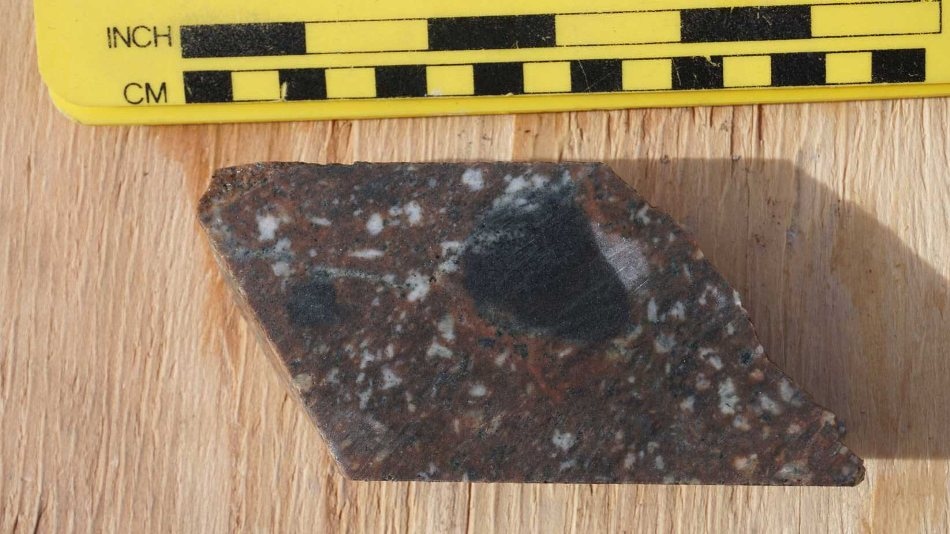Oct 13 2017
Gray Rock Resources Ltd. is pleased to announce that a recently completed 1,000 metre diamond drill program on its Hot Bath porphyry copper-gold property in the Dease Lake area of northwestern British Columbia has successfully demonstrated the existence of an altered porphyritic hornblende-monzonite intrusive. The drill program was designed to test the porphyry intrusive hypothesis indicated by previous geological, geochemical and geophysical surveys which were previously announced on September 13, 2017.
 Figure 1 Red Porphyry with plagioclase phenocrysts (Credit: Gray Rock Resources)
Figure 1 Red Porphyry with plagioclase phenocrysts (Credit: Gray Rock Resources)
The property, located approximately 50km north of the Red Chris Project, comprises twelve mineral claims covering a total area of 3,993.097 hectares which were acquired by DeCoors in 2012, based on Geoscience BC’s Quest Northwest airborne magnetic geophysical survey, rock geochemistry and geological mapping study. The property was optioned to Gray Rock Resources Ltd. by DeCoors Mining Ltd. on June 19, 2017.
The four test holes were sited on induced polarization targets with coincident copper and/or gold geochemical anomalies. Intersections of porphyritic textured, hornblende-monzonite intrusive rocks with potassium feldspar, hematite, magnetite and kaolinite group alteration in each of the four shallow drill holes, confirm an altered porphyry; the likely source for the geochemical and geophysical anomalies identified from exploration work by DeCoors in 2015 and 2016. The quartz-poor, plagioclase phyric, hornblende monzonite encountered in the drilling was variably altered by metasomatic potassium feldspar, illite-kaolinite-calcite and hematite, along with magnetite often in hairline fractures and replacing hornblende. Chlorite and epidote were also present in patches and seams. Fine, disseminated pyrite was ubiquitous throughout the core in all the holes and in sufficient quantity to explain the induced polarization anomalies.
Figure 1 Red Porphyry with plagioclase phenocrysts is available at http://www.globenewswire.com/NewsRoom/AttachmentNg/7e8b1774-25ed-415e-b5ee-415aa945f833
Surface prospecting encountered several areas of copper oxide staining with malachite, bornite and azurite, along with blebs of chalcopyrite, in addition to the previously announced supergene copper-gold bearing quartz vein on the property.
Work to date on the property identified porphyritic rocks that warrant further exploration work with petrographic studies of the alteration suite and trace element study from the rock assays. The limited drilling of this program did not test targets below a depth of 200 meters. Deeper drilling, in subsequent drilling campaigns, will be guided by additional deep, induced polarization surveys, prospecting/mapping, petrographic alteration studies and completion of MMI geochemical survey in untested areas. The results to date are encouraging however identification of a calc-alkaline porphyry does not imply economic mineralization and no mineral resource has been found and a mineral resource may not be identified on the property.
Core samples have been cut, tagged and prepared for shipment to SGS Laboratories in Vancouver for analysis.
Figure 2 Hornblende-monzonite with magnetite veins is available at http://www.globenewswire.com/NewsRoom/AttachmentNg/a3b20431-b929-4f2b-871d-86d70787e2ef
Qualified Person
Mr. John Buckle, P.Geo., P.Geoph., a Qualified Person as defined by NI 43-101, has reviewed and approved the scientific and technical disclosure in this news release. Mr. Buckle is a director of the Company, and is not an independent Qualified Person.